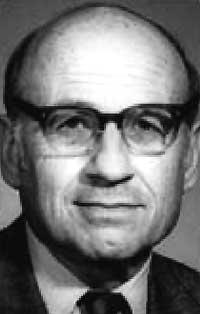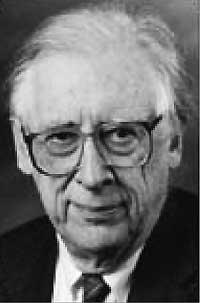Nobel Prize in Chemistry 1998 Chemistry from laboratory to computer

This year's Nobel Prize in Chemistry, like Physics and Medicine, has travelled to the United States, but the winners are not American but European: Walter Kohn is Austrian and John A. British pople.
The winners have been pioneers in the development of calculation methods for conducting theoretical studies of the properties of molecules and the chemical processes that occur between them, which is why the Royal Swedish Academy of Sciences awards the prize to both researchers.
XX. At the beginning of the 20th century the development of quantum physics opened up new possibilities to understand the molecular structure and thus be able to calculate the properties of molecules and their interactions. But practical applications were still far away, as it was impossible to use the complicated mathematical formulations of quantum physics in such complex molecules. Things begin to change in the 1960s, when computers begin to be used to solve complex equations, when quantum chemistry begins to develop as a new branch of chemistry. Since then, this branch has had a great development and has revolutionized chemistry. And in this development the works of Walter Kohn and John Pople have been fundamental.
Walter Kohn's work has been purely theoretical, laying the groundwork for simplifying and simplifying the mathematical model of describing links between atoms. Previously, the conventional calculation of the properties of the molecules was based on the description of the electrons individually considered, so the calculations were very complex. W. Kohn showed that it was not necessary to take electrons individually, that it was enough to know the average amount of electrons at any point in space, i.e. electronic density. It was demonstrated that any property of atoms and molecules is function (rather, functional) of this density. This allowed an important step to better understand why one atom joins another to form molecules and create increasingly complex systems.
The so-called theory of functional density is the way it developed and allows studying very complex molecules, with many atoms, in a much simpler way. Thanks to this, and since then, many researchers have developed W. Following the line opened by Kohn, the calculation system has been fine-tuned and developed, being one of the most commonly used calculation instruments in quantum chemistry.

In the 1960s many researchers in Europe and the United States began to expand the use of computer and to create calculation methods. In this area it is necessary to place John Pople at a higher level. Their methods allow theoretically analyzing the properties of molecules and their interactions in chemical reactions. Methods are based on the fundamental laws of quantum physics.
The computer is supplied with the basic data of a particular molecule or chemical reaction and the computer returns the description of its properties or explains how this chemical reaction occurs. It allows to predict the results of many types of experiments and, moreover, without complex and costly experiments, it is possible to predict, theoretically and with great reliability, the structure and properties of many molecules.
J. In addition to developing the method, Pople designed a practical application that uses this method, the Gaussian computer program, to be used by researchers around the world. The first version was published in 1970, and since then, when the last one has left this year, it has been tuning and improving continuously. Gaussian W programs in the early 1990s. He implemented Kohn's theory of functional density, broadening the way to theoretically analyze increasingly complex molecules. Today, thousands of chemists use this program at universities and chemical companies around the world.
Buletina
Bidali zure helbide elektronikoa eta jaso asteroko buletina zure sarrera-ontzian











